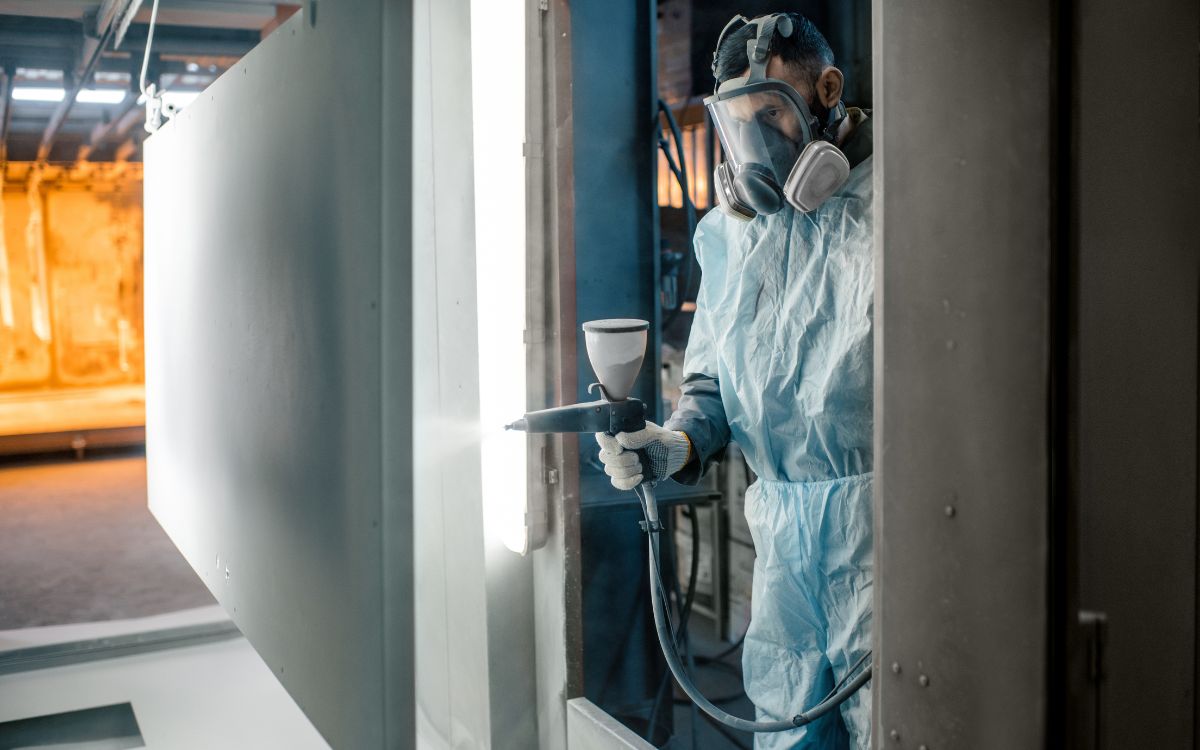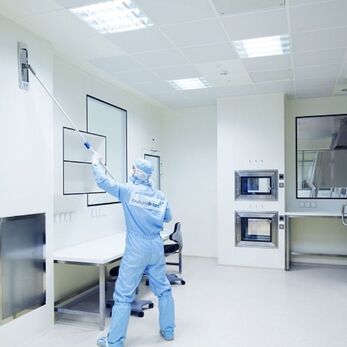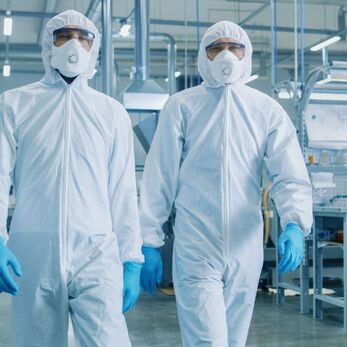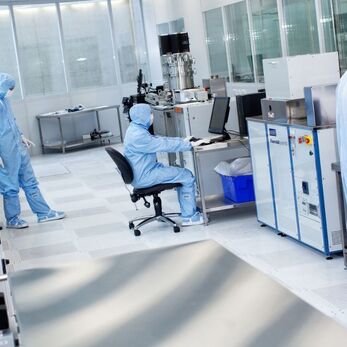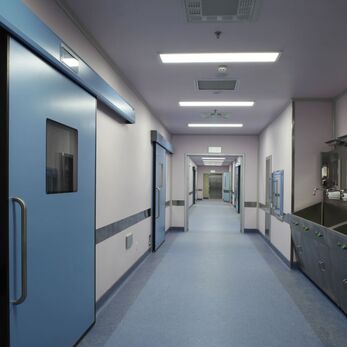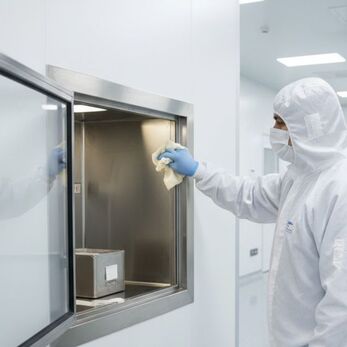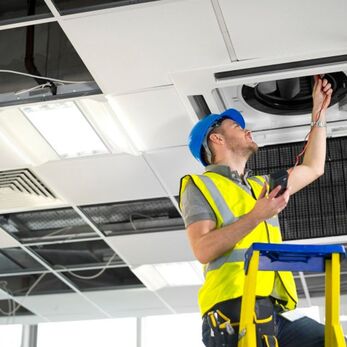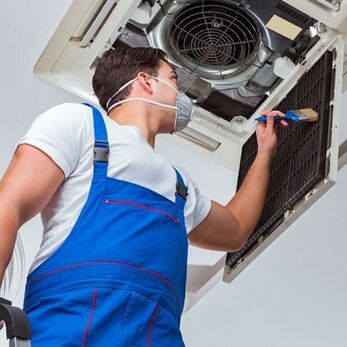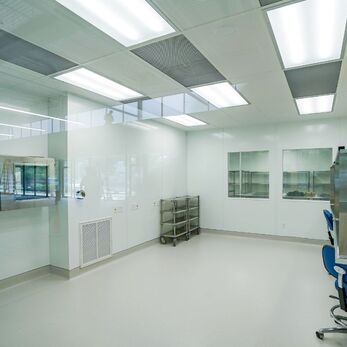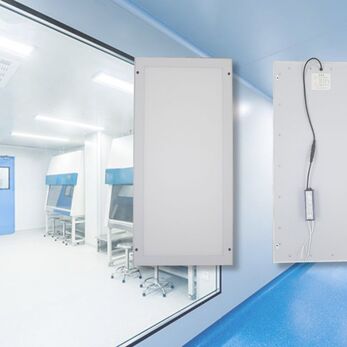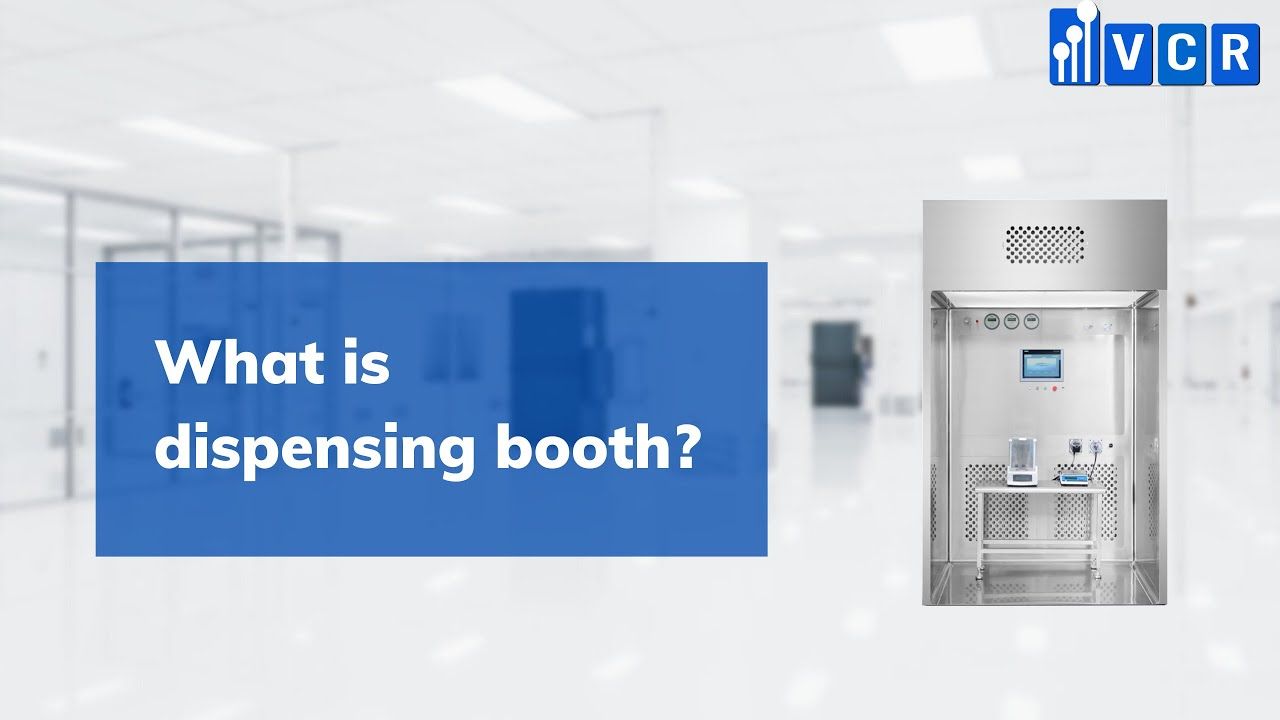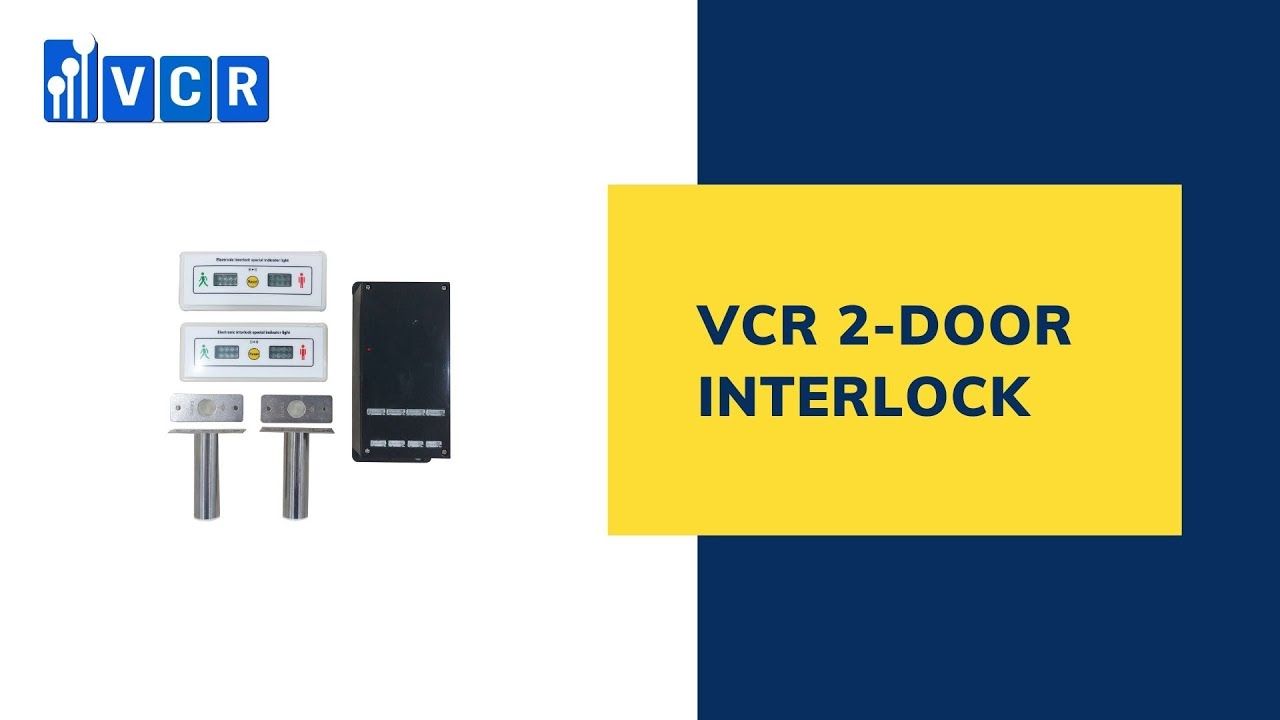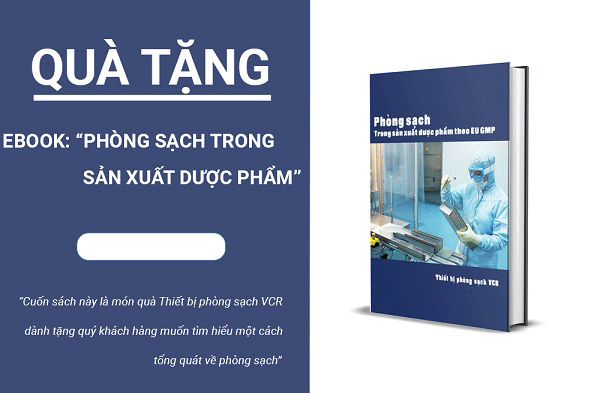Static electricity – an overlooked factor in cleanroom design
Static electricity – an overlooked element in cleanroom design that can cause fires and explosions, destroy electronic components, attract dust causing cross-contamination and erroneous measurements. Although little noticed, static electricity is a potential hazard that directly affects the safety, accuracy and quality of products in cleanrooms.
- 1. What is static electricity and why is it dangerous in cleanroom environments?
- 2. Why is ESD often overlooked in cleanroom design?
- 3. Industries where ESD control in cleanrooms is essential
- 4. ESD control solutions during cleanroom design
- 5. When should ESD control systems be integrated into cleanroom design?
- 6. Signs of an underperforming ESD system
- 7. ESD control in cleanrooms
- 8. Don’t let static electricity become a hidden risk in your cleanroom
In cleanroom design and operation - where all factors such as airflow, pressure and air filtration are often of primary concern -static electricity is an “easily overlooked gap”. Free flow of electric charges can lead to serious consequences such as damage to electronic components, cross-contamination of dust or even fire and explosion risks. In this article, VCR will help you understand why static electricity is a factor that needs to be controlled in cleanroom design, as well as points to note to prevent risks from the beginning.
1. What is static electricity and why is it dangerous in cleanroom environments?
Static electricity (Electrostatic Discharge – ESD) is the phenomenon of electrical charge imbalance between two surfaces, leading to a discharge of electricity when they come into contact or close proximity. In cleanroom environments-where strict control of particles, microbes, and environmental conditions is required-static electricity is a dangerous yet often overlooked factor during the design stage.
Here are the serious risks ESD can pose in cleanrooms:
Causes fire or explosion in volatile environments
In pharmaceutical, cosmetic factories, or laboratories using solvents such as ethanol or acetone, even a small static discharge can ignite a fire. This is especially dangerous in filling, packaging, or chemical handling areas.
Damages microchips in the electronics industry
Static discharge can generate thousands of volts-enough to destroy electronic chips, sensors, or circuit boards without visible signs. That’s why ESD is known as the “silent killer” in electronics manufacturing such as SMT, PCB.
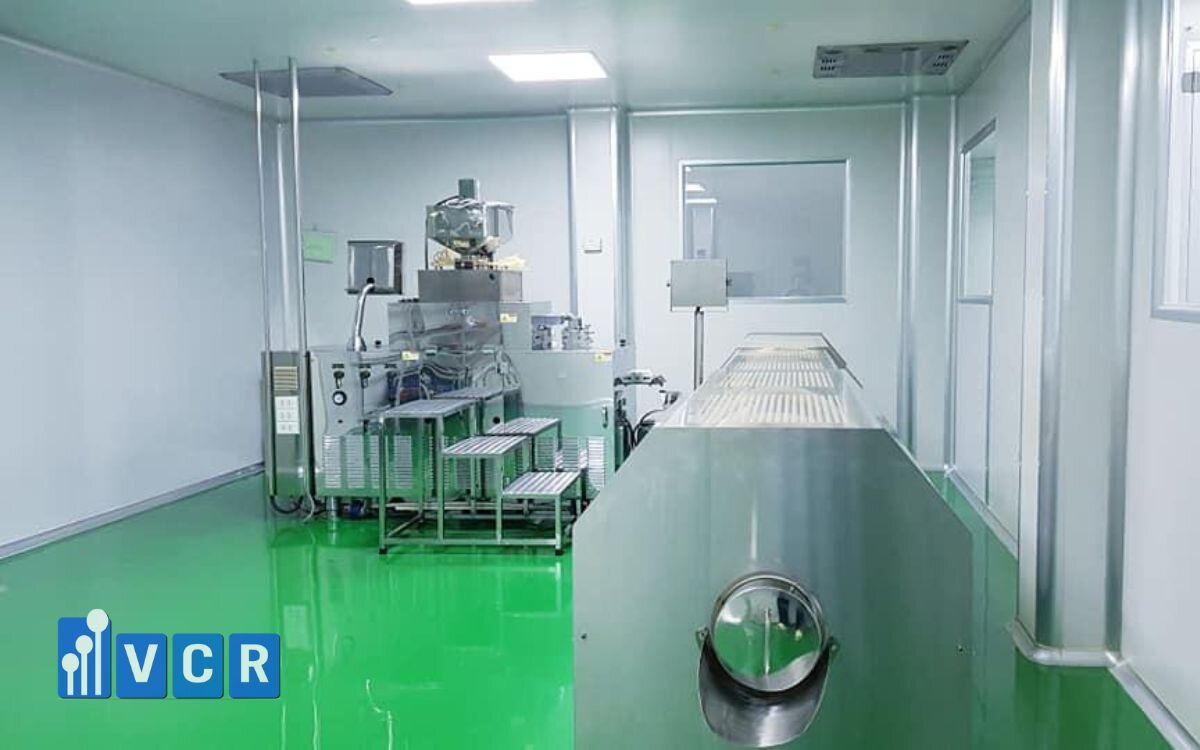
Contaminates products by attracting dust and microbes
Charged surfaces can attract fine particles, fibers, or microorganisms from the air. In cleanrooms, this leads to cross-contamination risks, especially in sterile filling and packaging zones for pharmaceuticals and cosmetics.
Causes weighing and sensor inaccuracies
Static electricity buildup in weighing areas, airlocks, or near sensors can disrupt measurement accuracy, causing micro-deviations that are significant enough to invalidate entire production batches-especially in GMP environments, where precision is paramount.
2. Why is ESD often overlooked in cleanroom design?
Although ESD poses significant risks, it is frequently neglected during the design phase of cleanrooms in Vietnam. The following are common causes:
1. Lack of awareness during consultation or early design stages
Design consultants often focus on “visible” factors like airflow, pressure differentials, or cleanliness class, without fully evaluating ESD risks. As a result, critical components like ESD flooring, ionizers, or conductive materials are left out of initial designs-making retrofits costly and ineffective.
2. No mandatory requirements in ISO 14644 or GMP standards
Standards like ISO 14644 or EU-GMP/WHO-GMP emphasize control over particles and procedures but do not explicitly mandate ESD control, leading investors and designers to skip over latent risks not directly mentioned.
3. Budget prioritization-ESD equipment gets cut
Budget constraints often push owners to prioritize mandatory systems like HVAC, filtration, and lighting. ESD control tools such as ion bars, ESD mats, or resistance meters are treated as optional-and often eliminated, especially in small and mid-size factories.
4. Execution errors from contractors lacking cleanroom experience
Many MEP or interior contractors come from general construction backgrounds and lack knowledge of ESD control in clean environments. They may use incompatible materials, fail to ground systems properly, or omit ESD measurement systems entirely.
Failing to consider ESD in design is not just a technical oversight-it can result in serious safety hazards and operational costs. That’s why cleanroom design must involve specialists with deep knowledge of each industry’s specific requirements-especially electronics, pharmaceuticals, or cosmetics.
See more: What is modular cleanroom?
3. Industries where ESD control in cleanrooms is essential
Not all cleanrooms require stringent ESD control, but several industries must implement ESD systems from the beginning to avoid equipment failure, contamination, or data errors. These include:
Electronics industry: PCB manufacturing, SMT assembly, microchip testing
This industry is highly vulnerable to ESD. A small discharge of a few hundred volts can destroy a microchip without leaving visible damage-making diagnostics and repair difficult and costly.
Key equipment includes:
- ESD mats and flooring
- ESD gloves, chairs, garments
- Inline ionizers on production lines
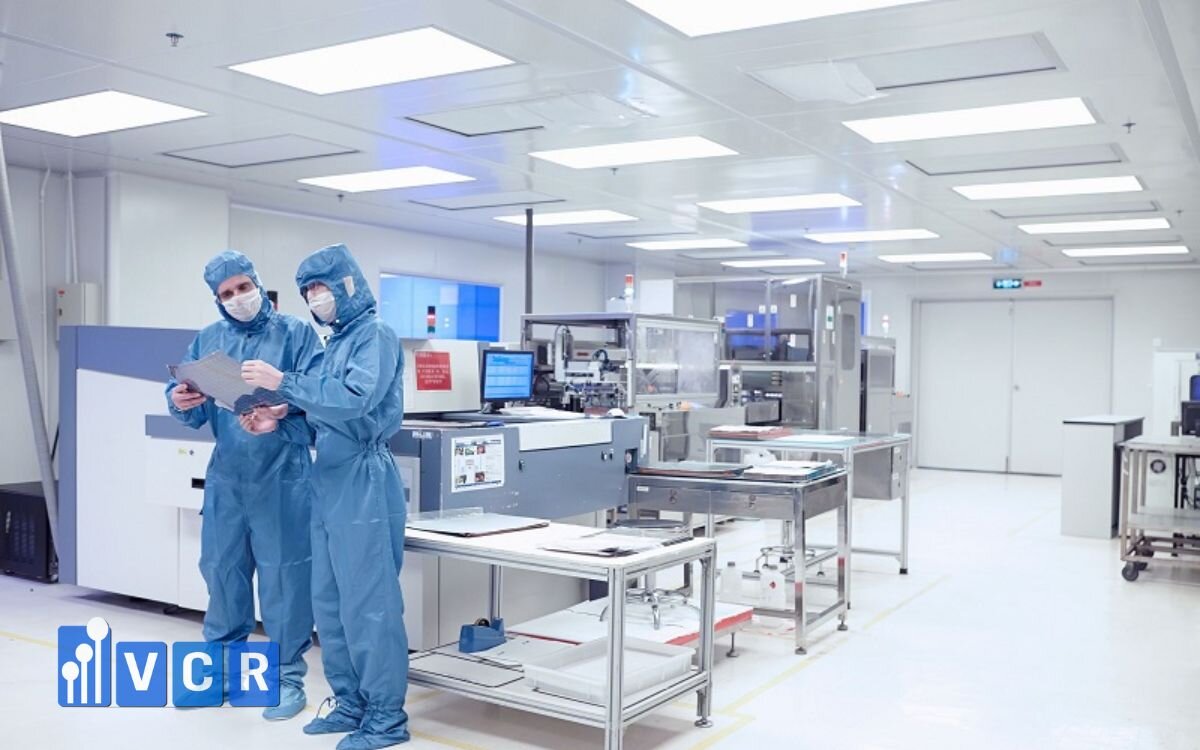
Pharmaceutical industry: powder weighing areas, automated packaging
Static can cause critical dosing errors during micro-weighing of active ingredients, resulting in incorrect dosage and reduced efficacy. In powder packaging areas, static can attract dust back to the film, causing contamination or foreign matter issues.
Common solutions:
- Ionizing bars in feeding and packing areas
- Grounded weighing equipment
- Conductive materials in weighing zones
Cosmetics industry: filling low-conductivity products
Products like serums, foundations, or gels often have low conductivity, and static buildup is common when passing through plastic or poorly grounded metal tubing. This can cause dust or fiber to stick to the packaging, reducing visual quality.
Recommended setups in GMP/ISO 22716 plants:
- Ionizing fans in filling areas
- Periodic floor resistance testing
- Optimized packaging materials to minimize charge
Food industry: film-based packaging lines
Roll films (aluminum, plastic, shrink film) build up static quickly when moving over rollers or heat sealers. This leads to film misalignment, sticking to machines, or dust attraction-impacting line efficiency and product safety.
Preventive measures:
Ionizing bars on packing conveyors
ESD mats at operator positions
Humidity control to reduce static generation
4. ESD control solutions during cleanroom design
To effectively manage static electricity in cleanrooms, solutions must be layered, synchronized, and tailored to different risk sources. These measures should be implemented during the design phase, not retrofitted later.
Below are key ESD control categories and their corresponding methods:
|
Control Area |
Devices / Methods |
|
Discharge from personnel |
- ESD mats at entrances and work areas - Wrist straps with grounding - ESD chairs for cleanroom use |
|
Floor and material treatment |
- ESD vinyl flooring - ESD epoxy coatings - Conductive walls and work surfaces |
|
Ionization equipment (Ionizers) |
- Ionizing bars (for conveyors, filling lines) - Ionizing fans (for static-prone work zones) - Ionizing guns (for point-of-use discharge) |
|
Monitoring and validation |
- Surface resistance meters - Static field meters - ESD wrist strap and footwear testers at entry checkpoints |
Important Note: A successful ESD system requires consistency across people, materials, devices, and monitoring routines. A gap in any link may result in loss of ESD control across the entire cleanroom.
See more: 5 things you need to know about clearoom
5. When should ESD control systems be integrated into cleanroom design?
One of the most common mistakes in cleanroom construction is considering ESD control only after the facility is operational. To achieve optimal effectiveness, ESD systems should be integrated from the earliest design stages. Specifically:
1. During the layout planning of production areas
This is the best time to identify:
- Areas with high ESD risk (weighing, packaging, component testing)
- Installation positions for ionizers, ESD mats, grounding wires
- Technical space for ESD checkpoints before room entry
Early integration of ESD helps optimize space, electrical routing, construction cost, and limits future retrofitting.
2. When selecting finishing materials for floors, walls, and ceilings
Many ESD incidents stem from construction materials that fail anti-static requirements. Consideration must be given to:
- ESD epoxy coating or anti-static vinyl flooring
- Wall panels with conductive properties
- Workbenches with ESD laminate surface
These choices should be carefully evaluated during sample approval and detailed design documentation.
3. Before installing equipment that can generate static charges
Devices such as film packaging machines, filling systems, SMT lines, and conveyor belts often generate high electrostatic charges due to friction. Before layout confirmation or actual installation, ensure:
- Ion neutralization is provided at friction-prone zones
- Equipment frames are properly grounded
- Post-installation ESD testing is in place
4. When developing operational procedures and staff training
Static electricity originates not only from equipment but also from human activity. When creating SOPs and training programs:
- Include wrist strap usage and resistance checks before entry
- Establish ESD checkpoints in airlocks
- Train technicians and QA/QC personnel on ESD safety practices
An ESD-compliant cleanroom depends on both technical systems and disciplined human operations.
6. Signs of an underperforming ESD system
Static electricity may not always present as a visible issue. However, if your ESD control system is poorly designed or improperly maintained, the following subtle but hazardous signs may appear:
1. Unusual dust accumulation in packaging areas
Static electricity causes surfaces of machinery, packaging, and products to attract dust, fibers, and particles, resulting in:
- Dust sticking to film during packaging
- Particles adhering inside packaging
- Higher risk of microbial cross-contamination (especially in pharmaceutical and food sectors)
If HVAC and hygiene are compliant but dust buildup persists, static electricity could be the cause.
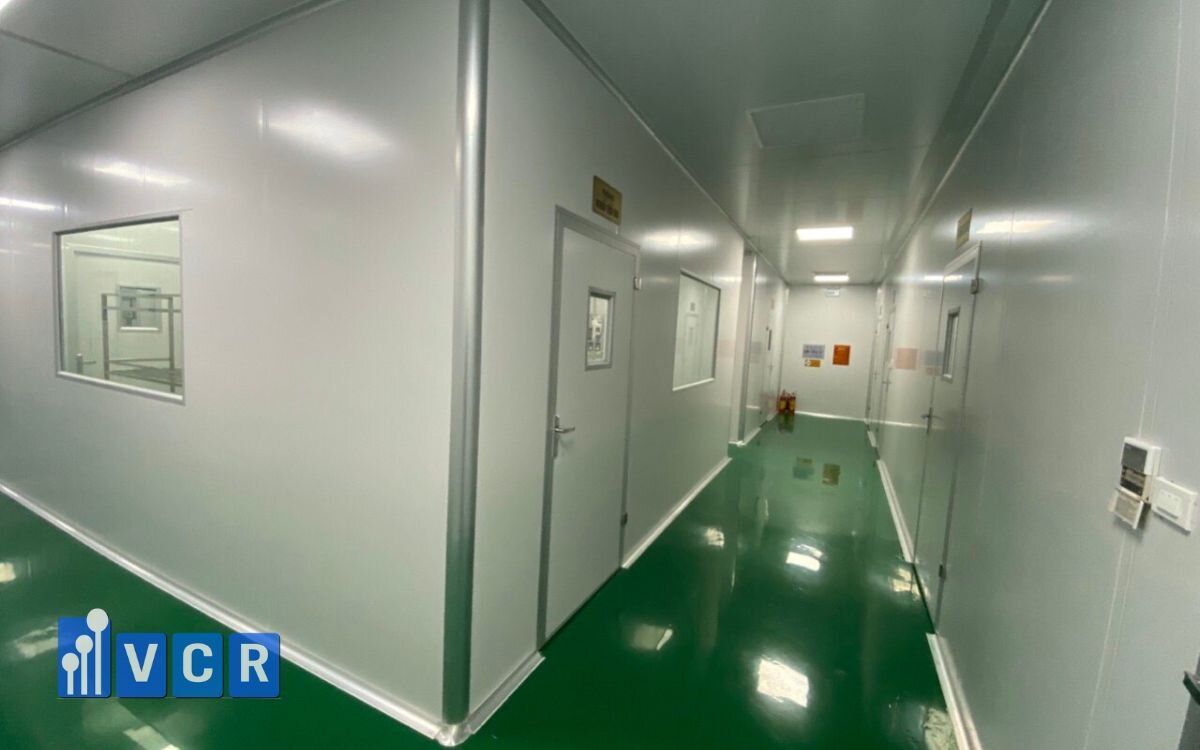
2. Mild shocks when touching equipment
This is a typical sign that:
- Personnel are charged and not properly grounded
- Equipment lacks anti-static measures or has a faulty grounding system
This occurs more frequently during dry seasons or near packaging and conveyor systems. While harmless to humans, it can damage components or disrupt operations.
3. Random errors in microchip testing
In electronics, static electricity is a hidden cause of erratic testing errors:
- Chips exhibit abnormal parameters without visible damage
- Products pass initial tests but fail upon retesting
- Test machines report non-repeatable errors, complicating root cause analysis
In such cases, ESD system evaluation should be prioritized.
4. Inconsistent scale readings in weighing areas
Static may interfere with:
- Accuracy of electronic scales (due to voltage interference)
- Materials being attracted or repelled by static forces
- Deviations from a few milligrams to hundreds-enough to breach GMP compliance or cause dosage errors
This is especially common in dry powder weighing zones or when working with highly charged materials. Routine resistance checks are required.
See more: What does cleanroom construction include
7. ESD control in cleanrooms
Is it mandatory to install ionizers in all cleanrooms?
No. Ionizers (bars, fans, guns) are only necessary in high-risk ESD zones such as:
- Electronics packaging lines
- Plastic bottle filling areas
- Dry powder weighing zones in pharmaceuticals
In storage areas, offices, or technical rooms, ionizers may not be required.
What’s the difference between ESD flooring and ESD paint?
These are two solutions for ESD floor treatment with different applications:
- ESD flooring (vinyl or rubber): A comprehensive solution installed from the beginning using conductive materials. Commonly used in electronics plants and test labs.
- ESD paint: A surface coating with low conductivity, ideal for upgrading existing floors or for limited budgets.
What ESD testing tools are essential for QA/QC?
Two indispensable tools for assessing and monitoring ESD systems are:
- Surface resistance meter: Used to verify compliance of floors, chairs, tables, gloves, etc., according to ANSI/ESD S20.20.
- Static field meter: Measures electrostatic charges on personnel, materials, or equipment, helping assess risks and define appropriate measures.
8. Don’t let static electricity become a hidden risk in your cleanroom
Static electricity is invisible-but its effects are very real: from microbial cross-contamination, weighing errors, and microchip damage to fire hazards. ESD control isn’t just a technical upgrade; it is a safety and operational standard.
Are you designing a new cleanroom?
Do you need to reassess the ESD system in your existing facility?
Looking for guidance on ionizers, resistance testers, or ESD flooring?
Contact Vietnam Cleanroom Equipment (VCR) to receive expert support in building a complete ESD control solution tailored to your industry and compliant with GMP, ISO 14644, ISO 22716 standards.
Hotline: 090.123.9008
Email: [email protected]
Website: https://vietnamcleanroom.com/
Diep VCR






